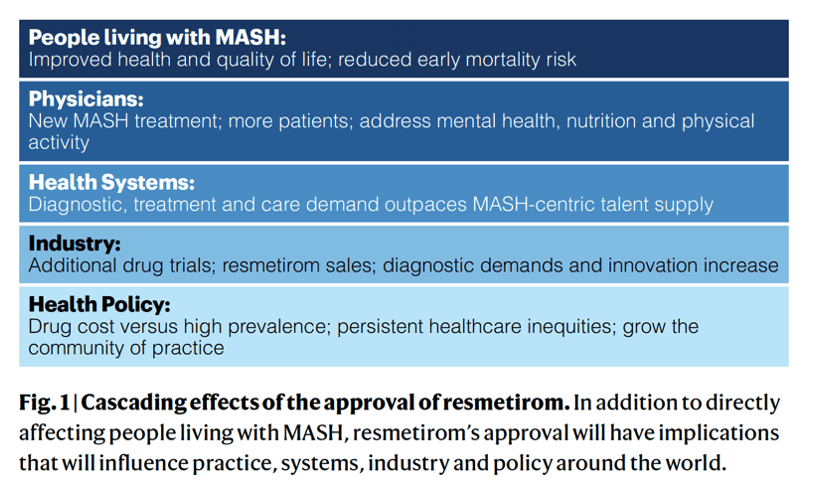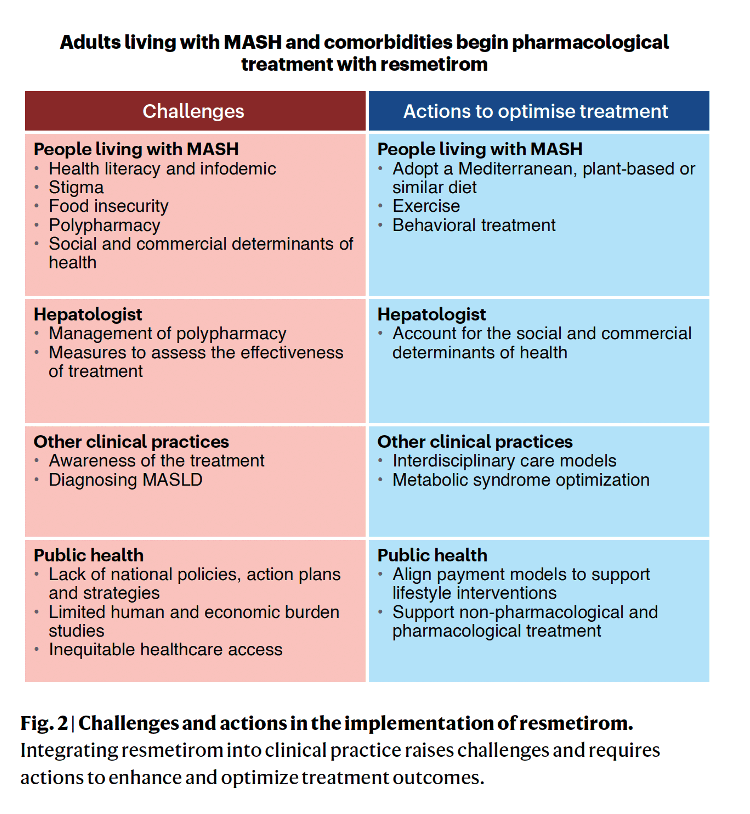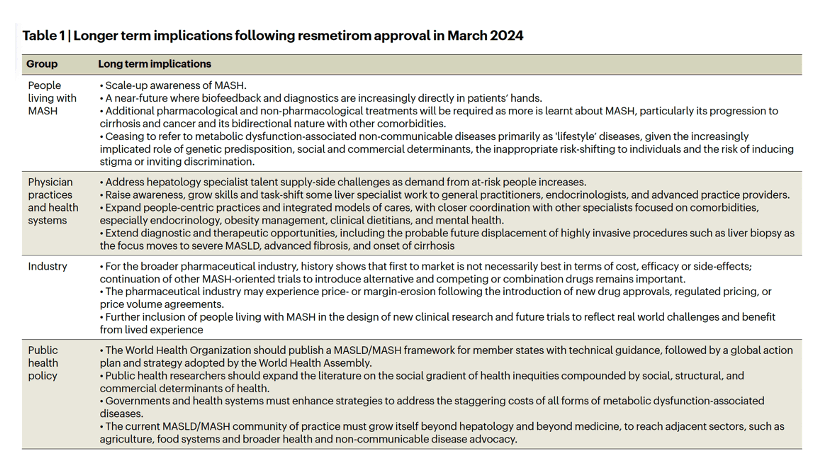| |
Opportunities and challenges following approval of resmetirom for MASH liver disease
|
| |
| |
Download the PDF here
The US Food and Drug Administration (FDA) has approved the first drug, resmetirom, for metabolic dysfunction-associated steatohepatitis (MASH), but much work remains for the industry, practitioners and health systems so that this approval will benefit all patients.
Millions of people, and their doctors, have long wished for an approved pharmacological therapeutic to treat MASH (previously known as NASH). MASH represents a necroinflammatory variant of metabolic dysfunction-associated steatotic liver disease (MASLD), formerly known as non-alcoholic fatty liver disease (NAFLD)1. MASH is characterized by the presence of >5% hepatic steatosis, combined with the ballooning of hepatocytes and inflammation, measured histologically. An estimated 38.2% of the global adult population lives with MASLD2; 20-30% of those are estimated to have MASH. An estimated 5-10% of global children live with MASLD3. MASLD is the most prevalent chronic liver disease in human history, and so viable treatments are needed for MASH.
Notwithstanding years of promising clinical trials4, until the approval of resmetirom by the FDA5 on 14 March 2024, the global liver health community had long waited for MASH drugs to succeed.
The current registrational trial of resmetirom excluded people with cirrhosis, children and women of child-bearing age who may be planning a pregnancy orMASH drug approval alone will not profoundly alter the course of rapidly growing metabolic dysfunction-associated non-communicable diseases, which coexist across all stages of MASLD. The pace of development and approval of new drugs across the spectrum of metabolic dysfunction warrants engagement of the industry with a range of healthcare providers, particularly given the potential polypharmacy burden experienced by people with MASH.



| |
| |
| |
|
|
|